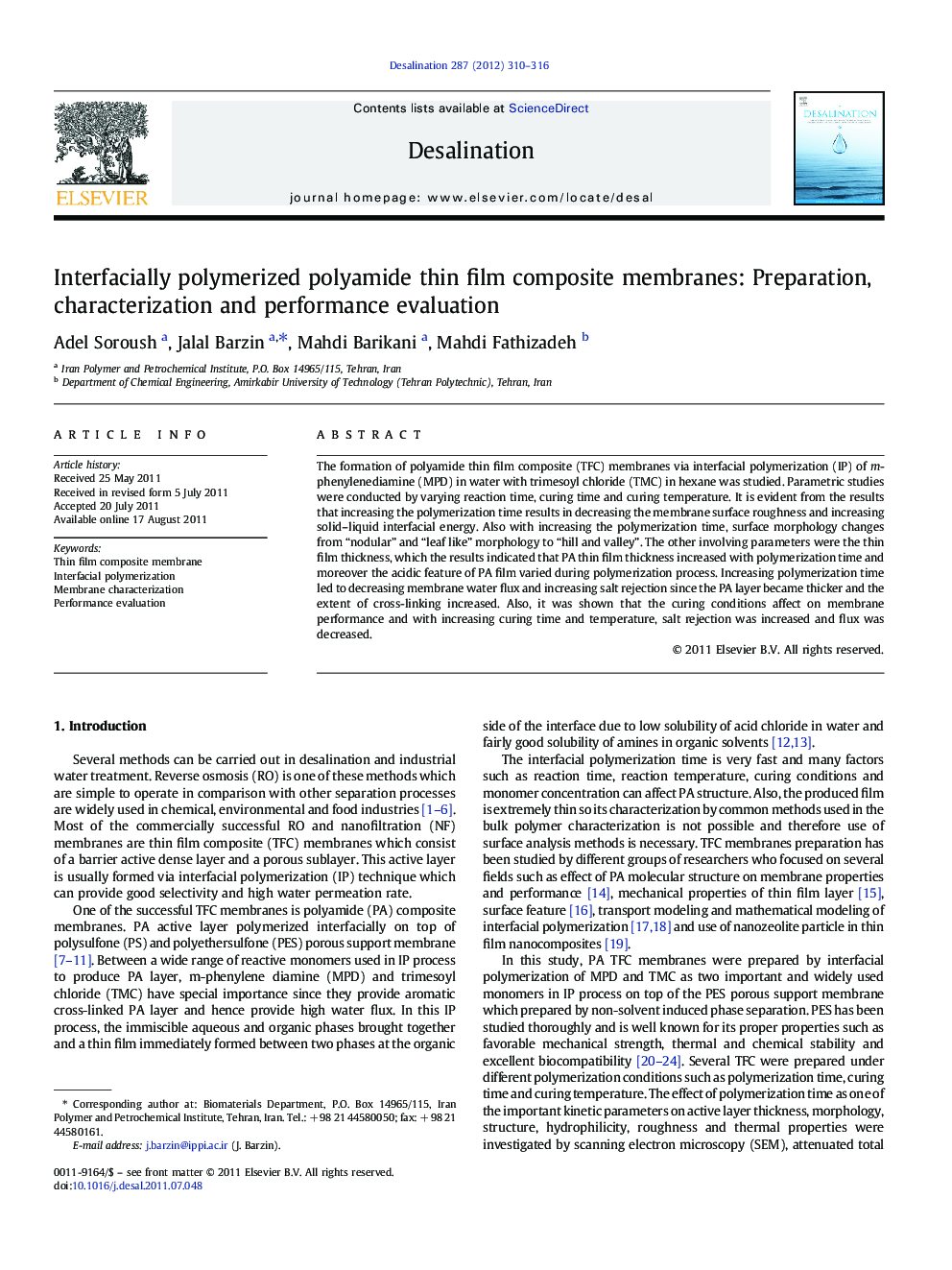| کد مقاله | کد نشریه | سال انتشار | مقاله انگلیسی | نسخه تمام متن |
|---|---|---|---|---|
| 624476 | 1455404 | 2012 | 7 صفحه PDF | دانلود رایگان |

The formation of polyamide thin film composite (TFC) membranes via interfacial polymerization (IP) of m-phenylenediamine (MPD) in water with trimesoyl chloride (TMC) in hexane was studied. Parametric studies were conducted by varying reaction time, curing time and curing temperature. It is evident from the results that increasing the polymerization time results in decreasing the membrane surface roughness and increasing solid–liquid interfacial energy. Also with increasing the polymerization time, surface morphology changes from “nodular” and “leaf like” morphology to “hill and valley”. The other involving parameters were the thin film thickness, which the results indicated that PA thin film thickness increased with polymerization time and moreover the acidic feature of PA film varied during polymerization process. Increasing polymerization time led to decreasing membrane water flux and increasing salt rejection since the PA layer became thicker and the extent of cross-linking increased. Also, it was shown that the curing conditions affect on membrane performance and with increasing curing time and temperature, salt rejection was increased and flux was decreased.
► Chemical structure of polyamide thin film affected by polymerization time.
► Thermophysical properties of polyamide thin film affected by polymerization time.
► Surface properties of polyamide thin film affected by polymerization time.
► Polymerization time has effect on thin film composite membranes performance.
► Curing time and temperature have effect on thin film composite membranes performance.
Journal: Desalination - Volume 287, 15 February 2012, Pages 310–316